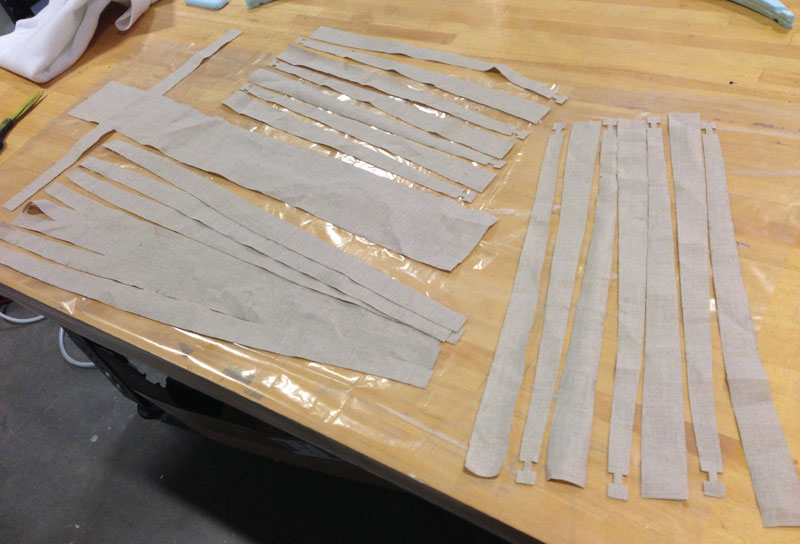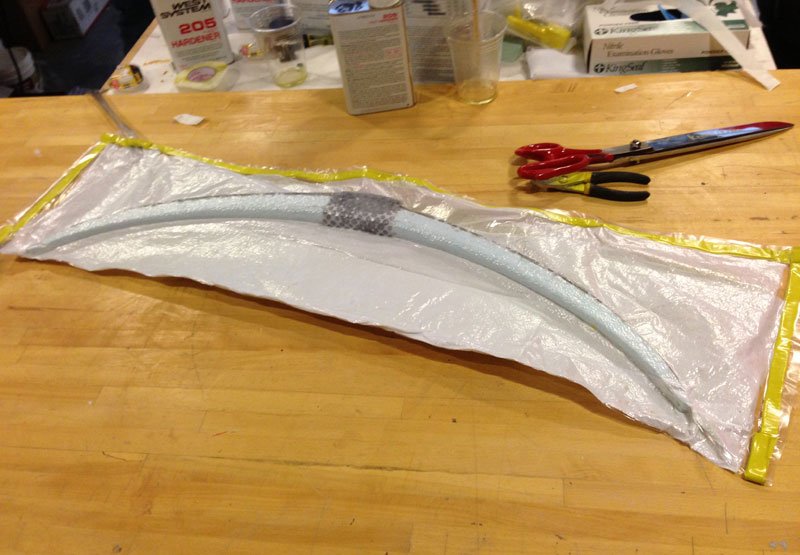Weekly Reports >
Week 10: Composites
Overview
The 10th assignment of the semester was to create a 3D mold, and produce a fiber composite part.
This week, I decided to make an archery bow and learned how to...
- Use the Shopbot to mill 3D molds from styrofoam
- Produce fiber composite (linen and epoxy) parts
Concept
As for this week, we were each given linen and epoxy to produce fiber composite parts.
Fiber composites are unique in a sense that they are not only durable but also light weight.
The epoxy provides strength towards compression, which the linen provides strength towards
tension. This characteristics make them suitable for building light weight objects with extra
durability and strength.
I then sat down and thought what would require strength but also light weight.
I instantly came up with sporting equipment, and decided to make a archery bow.
Though I'm not a serious archer, I thought the bow would be the most simplest in terms of
making something that actually functions.
Creating the Mold
My plan was to create a mold from foam and use it as a core,
so I first used Solidworks and designed a simple round edged bow.
I exported the model as a STL file and used the ShopBot to
mill out the mold.
When milling out the mold, I had to machine the
right half and the left half separately since there were round edgeds
on all sides.
After the milling process was finished, I glued the two halves together
and got myself a nice mold.
Preparing the Linen
The next process would be to laminate the mold with linen and epoxy.
But before moving forward, I used Solidworks and outlined the traces for
the linen to perfectly match my mold.
In order to maintain the flexibility, I decided to laminate the mold on only one side,
except for the handle part. Also, I designed it so that I would have 7 layers of linen on the top and bottom
ends, and 14 layers on the main body part for having a sturdy body with flexiable arms.
For cutting out the traces, I used the laser cutter. As for a good trick when laser-cutting
fabric materials, Sam pointed out that using the magnet clamps would make things nice and easy.
The laser cutter was awesome for cutting out the fabric precisely, and in no time, I had
the linen material ready.
Preparing the Vacuum Bag
When curing the composite part, I decided to use the vacuum bagging technique.
The vacuum bagging tecnique helps the linen and epoxy stick together firmly on the mold.
Although this tecnique is really useful, the process is not simple and it requires a lot of preparation.
I first layed out the outer plastic and applied special silicone adhesive tape on the edges. I then
layered the breather fabric and plastic. Finally, I attached a hose of the vacuum pump and everything was ready.
Laminating the Mold
When laminating the mold I mixed the epoxy resin with the hardener, and applied it to the linen.
I then layered the linen parts one by one along the mold. I realized that 4 arms and hands would make
the process so much easier. Thanks to Sujoy, I was able to laminate the mold faily easily.
After everything was done, I sealed the bag and sucked the air out of it.
I let it sit for about 7 hours before I removed the vacuum.
Removing the Foam Mold
After the 7 hours of curing the epoxy, I removed the bow from the bag.
The bow turned out nicely, and it was time to apply the finishing touches.
I used the band saw to cut off the foam mold on the top and bottom ends.
The shape came out fine, but I relized the the arms were a little weak.
Therefore, I decided to add 6 more layers to the top and bottom ends to make it more sturdy.
I used the laser cutter to create more linen parts, and repeated the vacuum bagging process once again.
After another 7 hours of curing the epoxy, I had a nice bow!
Downloads
You can download the design files for the bow here.
























